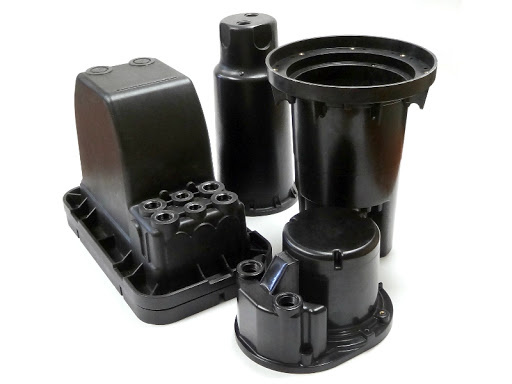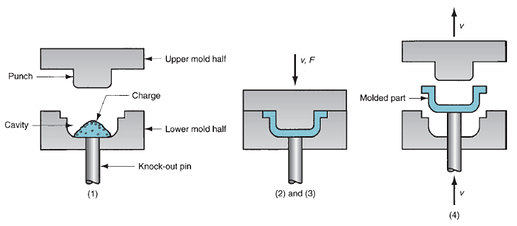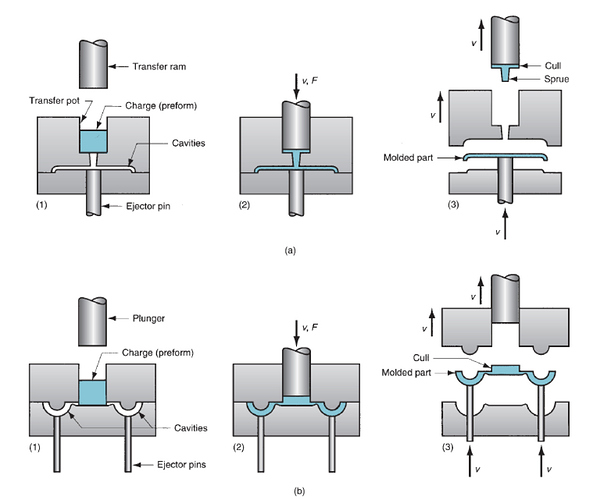
Compression Molding: Widely used molding process for thermosetting plastics
-
Common applications: rubber tires, electric plugs, pot handles
-
Molds are generally simply than injection molded counterpart
-
Advantages: Lower cost of tooling (molds are simpler), less scrap, low residual stress in molded parts
-
Disadvantage: Longer cycle times, lower production time
Process: consists of (1) loading a precise amount of molding compound, called the charge, into the bottom half of a heated mold; (2) bringing the mold halves together to compress the charge, forcing it to flow and conform to the shape of the cavity; (3) heating the charge by means of the hot mold to polymerize and cure the material into a solidified part; and (4) opening the mold halves and removing the part from the cavity -
Initial charge of compound can be powder, pellets, liquid
-
Transfer Molding: Specific type of compression molding to produce more intricate parts and molding with inserts (i.e. metal/ceramic insert placed into cavity before ejection)
o Two Types: Pot transfer molding, plunger transfer molding

